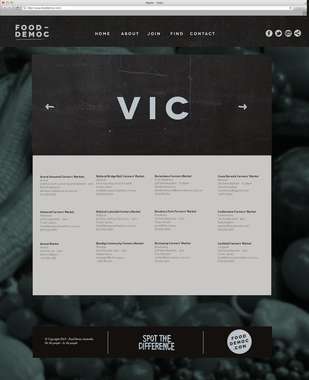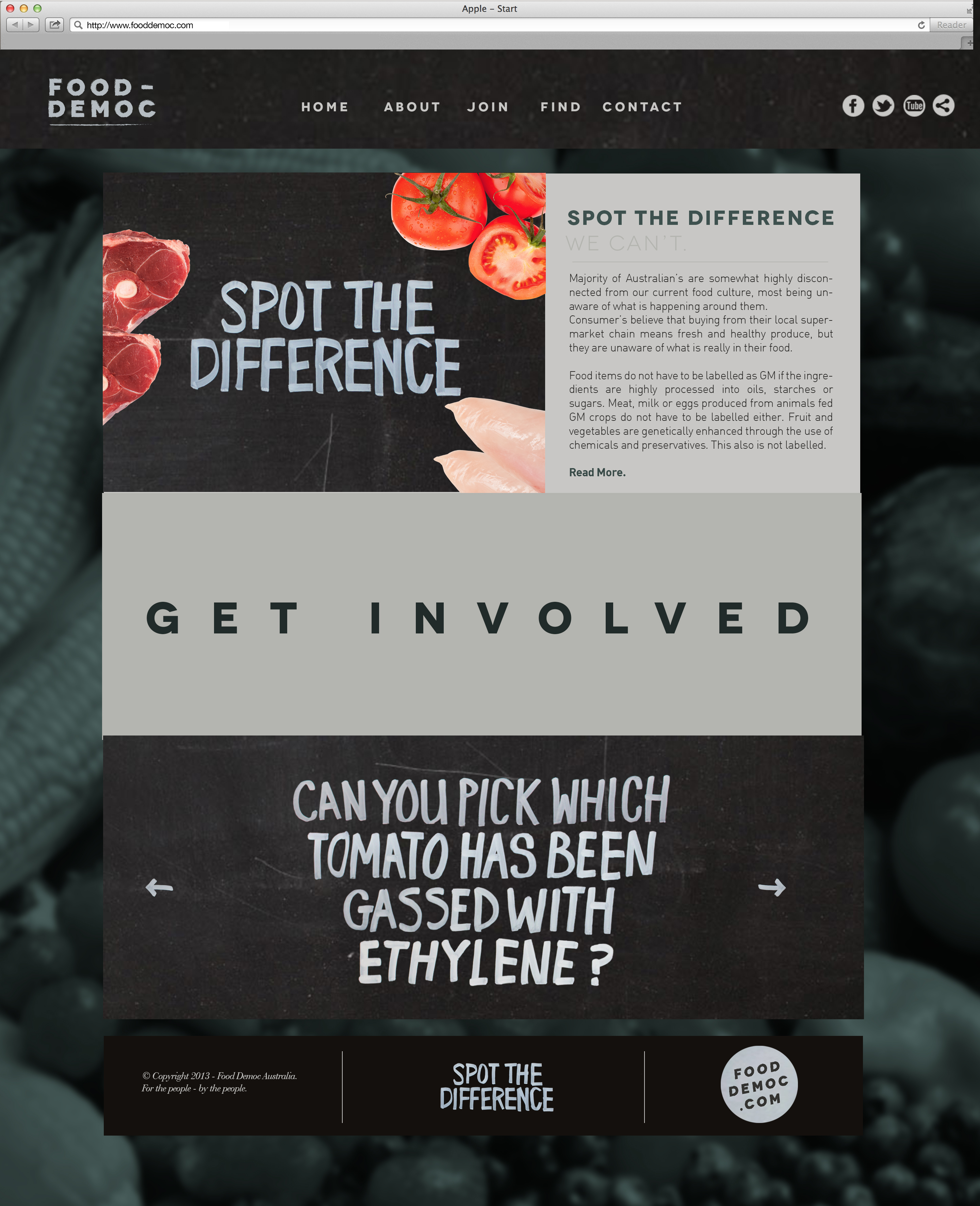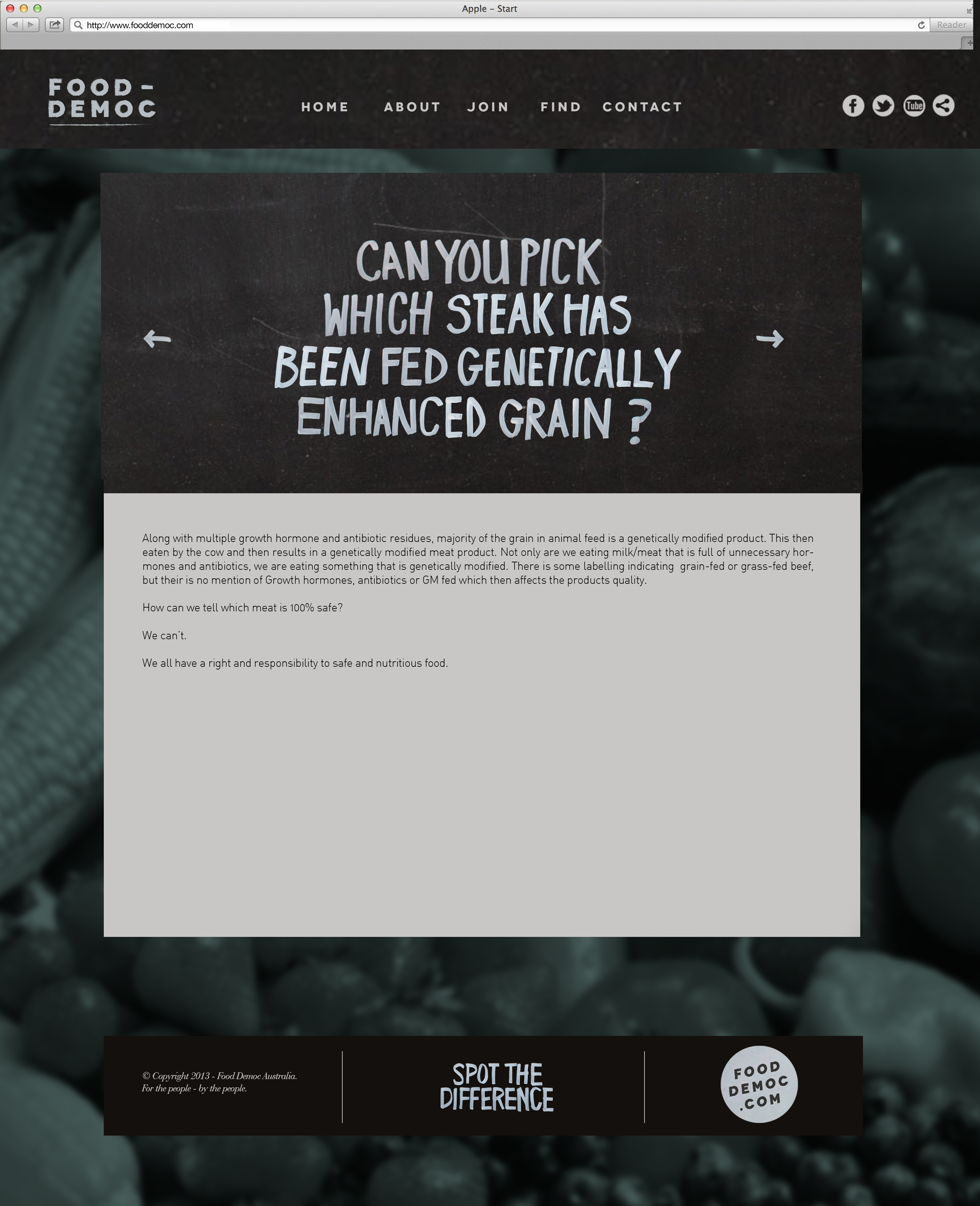Spot the Difference
by emilyharris
This work has been commented by 1 curator(s). Read the comments
Title
Spot the Difference
Headline
What is really in our foods?
Concept author(s)
Emily Harris
Concept author year(s) of birth
1991
Concept author(s) contribution
.
Concept author(s) Country
Australia
Friendly Competition
Competition category
Visual communication practice
Competition subcategory
static
Competition field
academic
Competition subfield
student
Subfield description
Queensland College of Art
Check out the Food Democracy 2013 outlines of Memefest Friendly competition.
Description of idea
Describe your idea and concept of your work in relation to the festival outlines:
I have decided to create an awareness campaign to educate Australians on what is really in their food and to campaign for better labelling on food with additives and genetically modified products. This campaign will make all consumer’s question an item’s quality before they make their purchase. If Australian’s were aware of what is really in their food and the effect this could have on one’s health, it could force better labelling and even a shift back to real food, which is now termed as ‘organic’.
What kind of communication approach do you use?
A variation of print advertising, guerrilla style marketing, and public involvement makes up the communication approach on which this campaign is run.
What are in your opinion concrete benefits to the society because of your communication?
My campaign communicates and benefits to the public by educating them on what is really in their food and encourages them to take action and be connected in our food culture. It creates awareness of a hidden issue, provides education, encourages participation and provides information on where the public can find fresh and unaltered food produce.
What did you personally learn from creating your submitted work?
From creating this work, I learnt alot about our current food crisis. I was aware of the hardship on our local farmers due to big corporations controlling our food but I did not know about the extent of the world’s food problem. I know feel that I am more food conscious - and want to do my part to try and secure our food security.
Why is your work, GOOD communication WORK?
My work is good communication work because it aims to educate the audience being the public through an interactive campaign approach. Allowing the public to be involved in the campaign process means that the public can relate more and then educate others around them.
Where and how do you intent do implement your work?
The campaign will be run initially by the creators of Food Democ. Posters will be put up around supermarkets (inside and out) - not necessarily in places were posters are meant to be hung.
Newspaper and magazine advertisements will be a full page spread. Newspapers choice will consist of the leading papers of each capital city, and magazine choice will be food magazines and lifestyle magazines.
Postcard flyers will be distributed via letterbox drop in suburbs in each capital city. Once people join the campaign, the flyers will be distributed in small and localised communities.
Stickers will be placed guerilla-style on ‘fresh’ produce in supermarkets, all fruit and vegetables and meat or poultry products will be the main target.
Once the campaign has been run and the public have become involved, the campaign will be furthered as the public participate in spreading the word and using their campaign kit in their local communities.
Did your intervention had an effect on other Media. If yes, describe the effect? (Has other media reported on it- how? Were you able to change other media with your work- how?)
No..
Curators Comments

Dr Zoë Sadokierski
Graphically, this is an effective piece of work.The copy writing and graphic style are strong and bold and make a point quickly. What you haven't shown well in the slides provided is the additional information that the consumer gets if they follow through to the website. It would be great to see some 'close up' details of the web content. If I bother to get to the site, am I rewarded with well written, informative content? How will I be able to participate?
However there is an issue with your campaign, and with several other works submitted this year, which I think it is important to discuss. Many students have chosen a "guerrilla style marketing" approach in which you put stickers on actual produce in supermarkets. Who will put these stickers on? When and how? What happens if the stickering party puts the stickers on food that is "real" or "organic" – if you cause people to not buy "real" food, then it goes to waste for no good reason, which is a terrible outcome and potentially harmful to the profits of the farmers who you are trying to protect. Have you considered what will happen when one of the big chains (Woollworths or Coles) sues you? Is this actually an effective way to get your message to consumers, or are you annoying them with not enough information when they are busy, tired and irritable in a supermarket, which could harm your reputation and the effectiveness of the campaign. This kind of guerrilla campaign may seem like an exciting and subversive approach, but you need to seriously weigh up the potential effectiveness in terms of getting your message across against the potential miscommunication and misrepresentation you may inadvertently cause. Consumers don't need more information being pushed at us in ineffective ways, we need clear messages at times when we can absorb them. I think your whole campaign would benefit greatly from dropping the stickering. You have also suggested a letterbox drop – have you looked into the amount of waste this produces, against the effectiveness of how many people respond to a letterbox drop? I think you'll find most people throw out the letterbox "junk" mail rather than engaging with it. Perhaps you could refine your target market – putting this kind of information up in local cafes who have organic ingredients, or information about meat into smaller grocery stores and information about fruit and vegetables into butchers would be a way to catch consumers who are already at 'tipping point' in their buying habits. If I got to a butcher to buy my meat, I may be prompted to got to a smaller grocer to buy my fruit, and vice versa. Think about how to most effectively target people in order to start a ground swell, rather than trying to bombast everyone in supermakets.
































